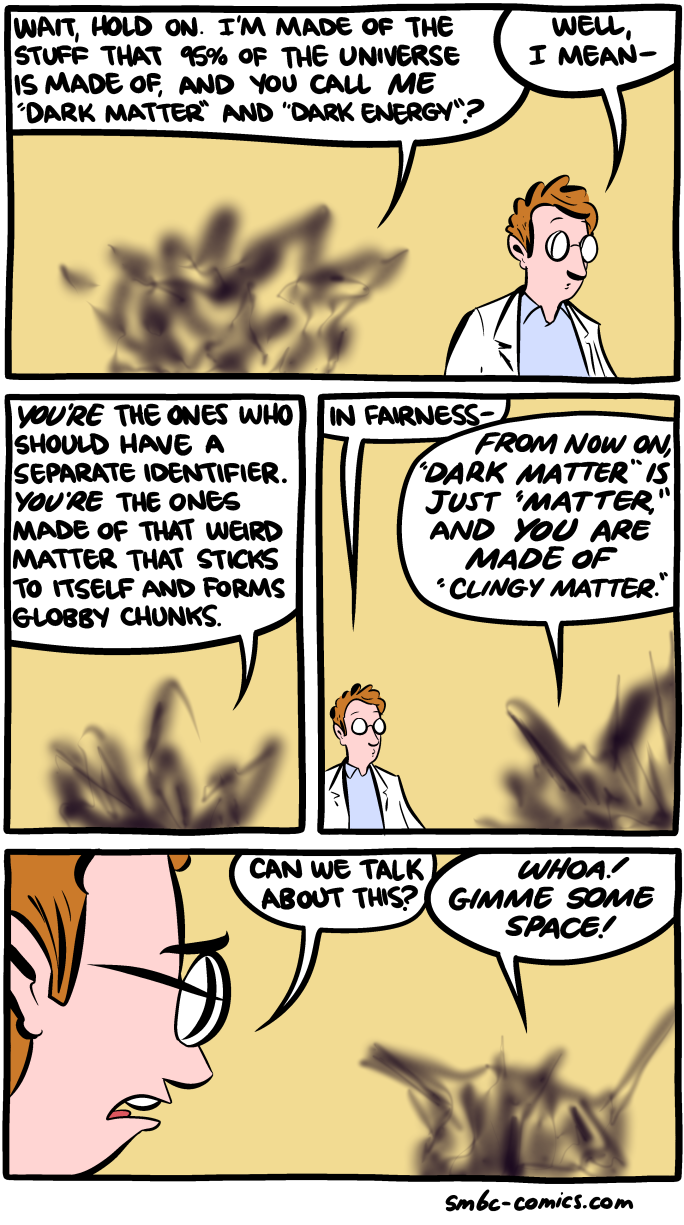Within the natural laws of physics, there is always an opposite to everything. Electrons have positrons, gravity and anti-gravity, and matter and anti-matter are all examples of an opposite to something already established within our universe. However, there exists a third type of matter that is outside the realm of what most scientists understand.
This matter, called dark matter, makes up 27% of our universe. In comparison, the matter the contains "us", "clingy matter" makes up less than 5% of our known universe. Dark matter was originally discovered when scientists were experimenting with the expansion of the universe and found that the universe was expanding at a slower rate than all of the calculated mass accounted it for. This slower rate was theorized to be an extra gravitational mass that had not been discovered yet. Because this mass had never been seen or interacted with, scientists gave it the name "dark matter."
The remaining 68% of our universe is inhabited by dark energy. Dark energy's properties are completely unknown and all that is understood is that it is the energy associated with dark matter.
http://science.nasa.gov/astrophysics/focus-areas/what-is-dark-energy/
The NASA website includes a couple theories for what this dark energy might be. One theory is that dark energy is itself a property of space, and that within the space-time continuum, empty space consists of its own energy to create its own, however minute, gravitational field.
Dark matter and dark energy are completely unknown in today's world and hopefully scientists may be able to unlock the mysteries of what fuels dark matter and dark energy.
Image Credit: smbc-comics.com


No comments:
Post a Comment